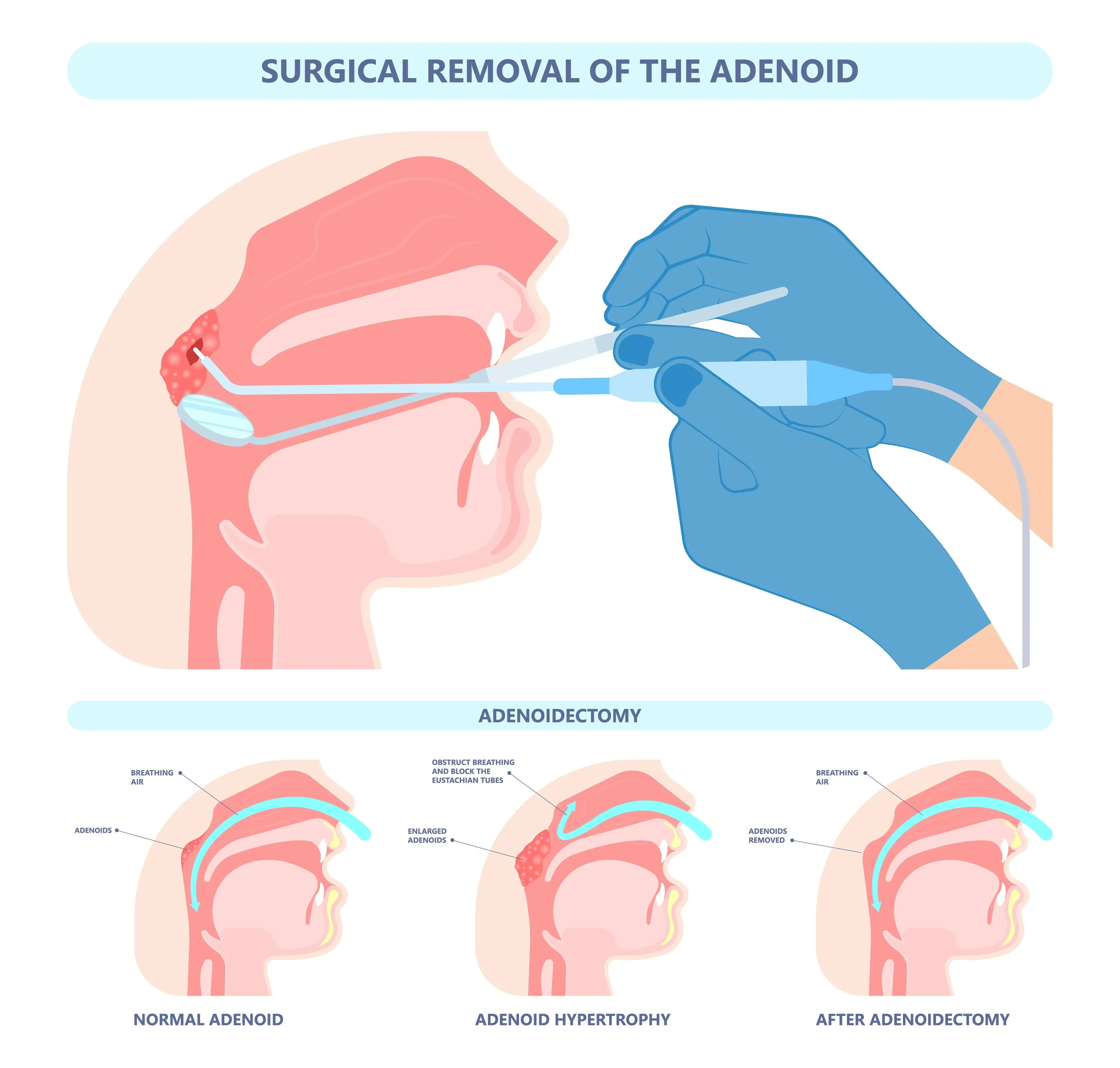Undergoing surgical procedures requires the consideration of many factors, such as potential side effects, recovery period, and efficacy. Adenoid removal is no different. While it's a relatively safe procedure, there are many pros and cons to look into before booking an appointment.
For some people, medication works effectively to treat enlarged adenoids. On the other hand, other people have a higher risk of developing severe complications, and surgery isn't advisable for such cases. Thus, besides weighing the pros and cons, speaking to your doctor to ascertain whether adenoidectomy is the best option for you is a must.
You can also do your research to learn more about surgery for adenoid removal when you need one, why it's the best option for your situation, and how long it takes to recover, among other things. Today's article is an excellent place to start with your research. Read on for all the essential details you ought to know.
Understanding Adenoids And Adenoidectomy
Adenoids refer to a patch of tissue located at the extreme back of the throat. They trap harmful viruses and bacteria when you swallow or breathe, keeping your body healthy. They play a critical role in fighting infections among children five years old and below. However, they begin to shrink after this period and tend to become less functional as children's bodies develop better ways to fight infections.
Adenoids can sometimes become chronically infected while fighting bacteria or viruses, causing them to enlarge. Allergies and genetics can also trigger their enlargement, resulting in adenoiditis. Consequently, this can obstruct the airways and cause breathing and swallowing difficulties. It has also been linked to other complications such as ear infections, snoring, or sleep apnea.
Furthermore, adenoiditis increases the risk of temporary hearing loss in affected individuals due to recurrent ear infections or fluid buildup. The doctor may prescribe medication, such as nasal sprays, to treat enlarged adenoids. If the swelling doesn't respond to them, your physician may recommend adenoidectomy, which is the surgical removal of adenoids.

Pros And Cons Of Adenoidectomy
Adenoidectomy has various benefits and drawbacks.
Pros
Some benefits of this surgery include enhanced breathing and vocal quality, reduced pain, and fresher breath. Here's a detailed discussion of these advantages.
-
Adenoidectomy Improves Breathing
As mentioned above, swollen adenoids cause snoring and sleep apnea, which indicates breathing difficulties. These occurrences lead to mouth breathing, increasing the risk of inhaling dust particles and other pathogenic microorganisms. It can also cause dental problems, like tooth decay and dry gums, and even alter one's facial structure. However, the surgical removal of adenoids promotes easy breathing through the nose, preventing the development of these complications.
-
Adenoidectomy Minimizes Pain
Enlarged adenoids are associated with sore throats and ear infections, which can cause significant pain for the affected person. For example, a sore throat can cause pain while eating or talking. Similarly, swollen adenoids block the Eustachian tube, inhibiting it from balancing pressure in the ears and draining the middle ear. This results in ear infections and pain that ranges from mild to intense.
Adenoidectomy eliminates the restriction in the Eustachian tube, allowing it to function properly. Consequently, this remedies ear infections and minimizes pain. Removing adenoids also alleviates obstruction in the airways, reducing the occurrence of sore throats.
-
Adenoidectomy Enhances Vocal Quality
Swollen adenoids alter the voice of the affected individual in terms of tone and pitch. When they speak, it can sound as though they have a stuffed nose. While correcting speech altered by enlarged adenoids is difficult, removing them improves pitch and tone significantly. It can enhance your communication skills, boosting your confidence.
-
Adenoidectomy Refreshes Breath
Infected or enlarged adenoids are a breeding site for bacteria, often resulting in bad breath. Finding a remedy that reduces the infection or the swelling can address bad breath. A surgical procedure to remove them is highly recommended for adenoids that fail to respond to medication.
Cons
Despite the many benefits of adenoidectomy, the surgical procedure has its downsides, too. However, most of these cons are temporary and will disappear after you fully recover. They include risk of bleeding, swallowing difficulties, and ear pain. Below is a more elaborate discussion of them.
-
Risk Of Bleeding
Unlike most surgeries, the risk of bleeding during or after an adenoidectomy is fairly low. Nonetheless, patients need to know about it before deciding to undergo the procedure. In addition, the risk of bleeding may be greater in patients that have undergone nasal surgeries, such as a septoplasty, in the past.
Bleeding excessively during or after the procedure can lead to complications such as blood clots, organ failure, seizures, or even death. Therefore, immediately getting in touch with a physician in such situations is highly advisable.
Younger children may not realize or report that they're bleeding. Thus, parents are advised to check for sudden bleeding in the nose or mouth. In addition, if your child is swallowing too frequently, consider checking the back of their throat for traces of blood.
-
Swallowing Difficulties
The positioning of adenoids prevents food from going into the nose after swallowing. As such, their removal means nothing is stopping this from happening. After undergoing an adenoidectomy, it takes some time to get used to swallowing properly. This may also be accompanied by pain, which may also last a while. Nonetheless, these symptoms may require a visit to the doctor.
-
Ear Pain
Ear pain is another side effect of undergoing adenoidectomy. As mentioned earlier, swollen adenoids can cause ear infections and pain due to a blocked Eustachian tube. The procedure alleviates blockage and enables the tube to resume normal functioning. However, the pain doesn't go away immediately, but you should expect it to subside in a week or two.
Overall, the pros of undergoing an adenoidectomy override the cons. For one, the procedure eliminates adenoids and accompanying symptoms like ear infections, breathing and swallowing difficulties, pain, and bad breath. Additionally, adenoids eventually shrink during teenage years; thus, having them removed doesn't affect your bodily functions. Furthermore, most of the cons are temporary and improve with time.
Final Remarks
There are several pros and cons to consider before undergoing adenoidectomy. The benefits include enhanced breathing and vocal quality, fresher breath, and reduced pain. On the other hand, the drawbacks of undergoing the procedure include the risk of bleeding, swallowing difficulties, and ear pain. However, in most cases, these cons last for a short while until you've fully recovered. Thus, the pros of undergoing the procedure overthrow the negative effects.
Nevertheless, speaking to your physician is advisable to determine whether the procedure best fits your current condition. Remember to be open and honest with your doctor about your medical history and symptoms to ensure successful outcomes.

Reviewed by







